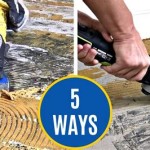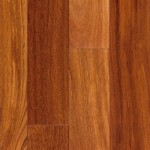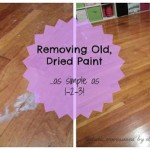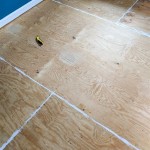Whitewash Wood Floors DIY Ideas for Beginners
Transform your wooden floors into a stunning, rustic masterpiece with these easy-to-follow DIY whitewash techniques. Whether you're a seasoned DIYer or a complete novice, these step-by-step instructions will guide you through the process, ensuring you achieve a professional-looking finish.
Benefits of Whitewashing Wood Floors
Whitewashing wood floors offers numerous benefits, including:
- Brightens and lightens dark or dingy floors.
- Enhances the natural wood grain, creating a unique and textured look.
- Protects the floor from wear and tear by creating a thin, transparent layer.
- Adds a touch of rustic or coastal charm to your home.
Essential Materials
Before you begin, gather the following materials:
- Clean whitewash or homemade solution (instructions below)
- Clean rags or microfiber cloths
- Soft-bristled paintbrush
- Orbital sander (optional, for distressing)
- Polyurethane or other floor sealant
- Safety glasses and gloves
How to Make Homemade Whitewash
If you prefer a homemade option, you can create your own whitewash by following these steps:
- Combine 1 part white latex paint with 3 parts water in a bucket.
- Stir thoroughly until the mixture is evenly blended.
- Add 1 tablespoon of vinegar or ammonia to the mixture to prevent yellowing.
- Adjust the consistency as needed. It should be similar to thick milk.
Step-by-Step Whitewashing Instructions
- Clean the Floor: Remove all dirt, dust, and debris from the wood floor using a vacuum or broom.
- Apply the Whitewash: Using a clean cloth, apply the whitewash evenly to a small section of the floor. Wipe in the direction of the wood grain.
- Let Dry: Allow the whitewash to dry completely, usually within a few hours.
- Repeat the Process: Apply additional coats of whitewash as desired. Each coat will lighten the finish.
- Distress (Optional): Use an orbital sander with fine-grit sandpaper to lightly distress the floor, creating an aged or rustic look.
- Seal the Floor: Apply a thin coat of polyurethane or other floor sealant to protect the whitewash and enhance durability.
- Allow to Cure: Let the sealant dry and cure according to the manufacturer's instructions. Avoid walking on the floor until fully cured.
- Test the whitewash on an inconspicuous area first to ensure the desired color and effect.
- Use clean rags or cloths to avoid streaks or dirt transferring to the floor.
- Apply thin, even coats of whitewash and allow ample drying time.
- Protect your eyes and hands by wearing safety glasses and gloves.
- Work in a well-ventilated area and allow proper ventilation during the drying process.
- Add a Hint of Color: Mix a small amount of colored latex paint into the whitewash to achieve subtle color variations.
- Create a Distressed Look: Use a wire brush or sandpaper to distress the whitewashed surface, revealing the natural wood underneath.
- Combine Techniques: Mix and match whitewashing with other techniques, such as staining or antiquing, for a multi-dimensional effect.
Tips for a Professional Finish
Variations and Customization
Experiment with different colors and techniques to create unique and personalized whitewashed wood floors:
With a little patience and creativity, you can transform your wood floors into a beautiful and inviting space that reflects your personal style and adds character to your home.

How To Refinish Wood Floors Easy Diy Whitewash Lauren Stewart

How To Whitewash Wood In 3 Simple Ways A Piece Of Rainbow

Wood Floor Refinishing And Whitewashing The Honeycomb Home
:strip_icc()/10194750920whitewash20floors20step202-99eae86a2dd746d9b89b35a639a0973a.jpg?strip=all)
How To Whitewash Hardwood Flooring For A Fresher Aesthetic

4 Steps To Whitewash Wood A Tutorial
:strip_icc()/10194749720whitewash20floors20prep-0bb4794981c64d7283b6a7e6aef24834.jpg?strip=all)
How To Whitewash Hardwood Flooring For A Fresher Aesthetic

How To Whitewash Wood In 3 Simple Ways A Piece Of Rainbow

Nostalgiecat How To Whitewash Wooden Flooring

Wood Floor Refinishing And Whitewashing The Honeycomb Home

How To Whitewash Wood In 3 Simple Ways A Piece Of Rainbow
See Also







